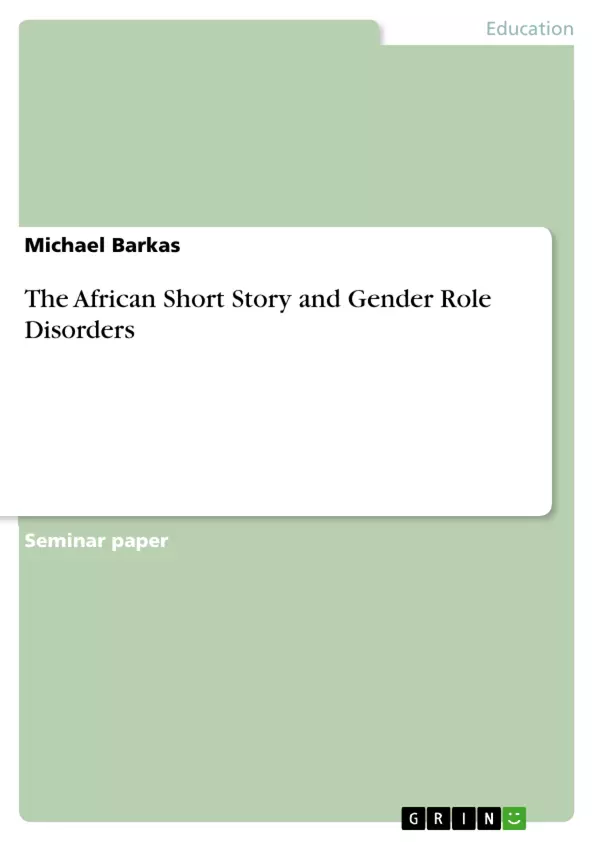Examples of gender role disorders in the African patriarchical background in a selected poem and two short stories.
From the text:
- Women's sexual education in Uganda and Zimbabwe;
- Harriet Anena "I died alive" and "The Axe";
- Kristina Rungano "The Woman";
- Gwendolene Mugodi "A Question of Underwear"
Inhaltsverzeichnis (Table of Contents)
- Introduction
- Women's sexual education in Uganda
- Women's sexual education in Zimbabwe
- Text Analysis
- About the authors
- Expressions of women's oppression in poetry
- Harriet Anena: I died alive
- Kristina Rungano: The Woman
- Women's empowerment through gender role disorders
- Harriet Anena: The Axe
- Gwendolene Mugodi: A Question of Underwear
- Conclusion
Zielsetzung und Themenschwerpunkte (Objectives and Key Themes)
This paper aims to analyze contrasting examples in African women's literature from Uganda and Zimbabwe, focusing on the themes of oppression and gender role function. It explores how these themes are portrayed through poetry and short stories, highlighting the struggles of African women against patriarchal customs and social norms.
- The impact of patriarchal traditions on women's lives and experiences.
- The role of women's sexual education in shaping gender roles and expectations.
- The portrayal of female empowerment through the subversion of traditional gender roles.
- The exploration of gender role disorders and their implications for marital relationships.
- The significance of women's voices in challenging societal norms and promoting equality.
Zusammenfassung der Kapitel (Chapter Summaries)
The introduction sets the stage for the analysis, outlining the contrasting examples of women's oppression and empowerment in Ugandan and Zimbabwean literature. It establishes the key themes of gender roles, patriarchal traditions, and women's struggles for liberation. The text analysis section delves into the works of various authors, examining how they portray women's experiences of oppression and their attempts to break free from societal constraints. The chapter summaries focus on the main themes, arguments, and narrative elements of each chapter, providing a comprehensive overview of the text without revealing major conclusions or spoilers.
Schlüsselwörter (Keywords)
African women's literature, gender roles, oppression, patriarchy, empowerment, gender role disorders, sexual education, marital relationships, female voice, societal norms, equality.
- Quote paper
- Michael Barkas (Author), 2016, The African Short Story and Gender Role Disorders, Munich, GRIN Verlag, https://www.grin.com/document/351256



